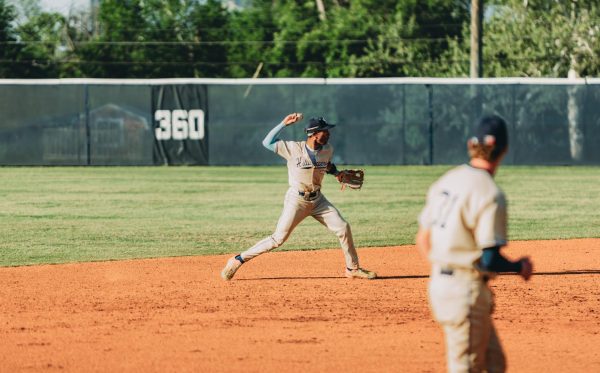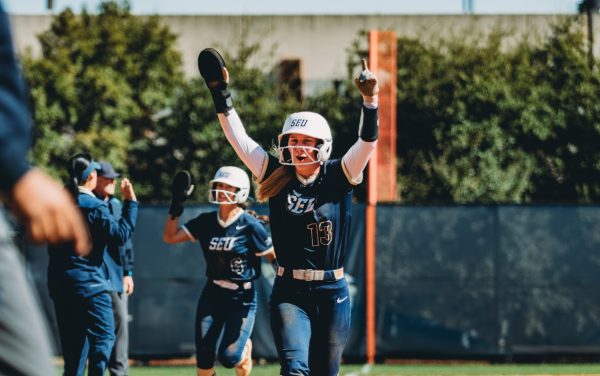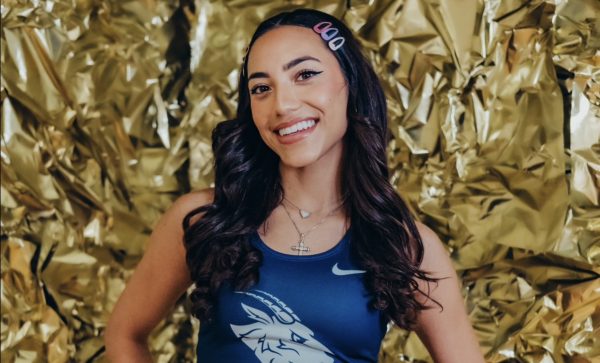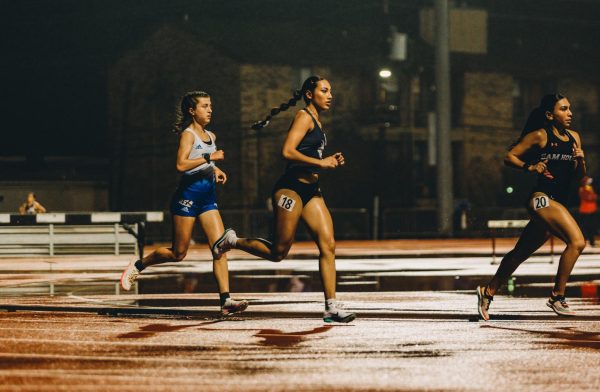Student translates parkour to barefoot running
One of the most steadily growing trends in the fitness world at the moment is the adoption of barefoot running. Austin, one of the nation’s fittest cities, has welcomed the trend with open… feet.
Barefoot races are popping up all over, one of the more recent races being the Naked Foot 5k. A “shoes optional” event, the race boasts a 5k cross country run, paddleboard race and obstacle course.
Geared towards beginner and intermediate barefoot runners, there is a two-hour mini expo that educates runners on the technique and advantages to barefoot running, as well as tips for avoiding common injuries.
St. Edward’s University senior Walter Anderson has embraced barefoot running and was a volunteer during the Naked Foot 5k on Oct. 6. Hilltop Views interviewed Anderson to get his take on what goes on between his toes.
Hilltop Views: What benefits does running barefoot give you?
Walter Anderson: The barefoot running trend comes from history. Until recently, most long distance running has been done either barefoot or in very thinly soled shoes. There is a lot of evidence that says current padded athletic shoes are actually detrimental to the health of our feet. Wearing athletic shoes has been shown to increase the risk of ankle sprains, knee pain, shin splints, as well as a lot of other chronic injuries. Padded athletic shoes have also completely changed the way we naturally run. The now traditional “heel strike” stride ends up increasing the impact on your feet to something like two to three times your body weight. Barefoot running relies more on landing on the ball of your foot and taking advantage of the natural “springy-ness” of your arches. Personally, I have noticed a very distinct decrease in aches and pains after running a long distance after changing my running stride.
HV: What are the drawbacks?
WA: Of course, running without shoes also increases the likelihood of stepping on sharp rocks or pointy things.
HV: How does it change your style of running?
WA: You need to be a little bit more aware of your surroundings and what surface you are running on.
HV: What got you into this movement?
WA: I got into the barefoot running movement from training parkour. A lot of people in the parkour community advocate more natural ways to condition and train your body, so there is a lot of support for minimalist shoes and barefoot training. Actually, my absolute favorite shoes to train in—or do anything really—are minimalist wushu shoes called Feiyues. They are very cheap—albeit they last about three to four months—and protect my feet from anything dangerous I might step on while still giving me a good feel of the ground.
HV: If you could tell anyone one thing that would convince them to run barefoot, what would it be?
WA: Honestly it is pretty tough convincing people about barefoot running; it’s the same with parkour. Most people are set in their ways and are afraid of change and afraid of hurting themselves. People think that running barefoot is somehow unattainable. “Oh I’m just not ready to do something like that.” Like hell you are. Just take your shoes off and walk around in the grass.
HV: Where do you prefer to run?
WA: I always prefer to run outside. Anywhere that is not flat and changes scenery, running uphill and downhill, basically anything that makes running an adventure. Because, honestly, I do not like running. The way the average person views running is so boring. Run around a track four times with your iPod on and looking at the ground. How is that fun? How will you muster up the motivation to do that again when the first time was so boring and painful? The key to doing anything is make it fun.
HV: What running events will you be competing in in the future?
WA: Not planning on anything in particular right now. The Zombie Run looks really fun, and I think some friends are running it so I might join them for that. I am really not too competitive when it comes to these things, so I will continue to run, but for myself. My ultimate running goal is to have a sub 1-hour half marathon. I think that is pretty attainable. It is all about progression. Slow and steady will get you there.






